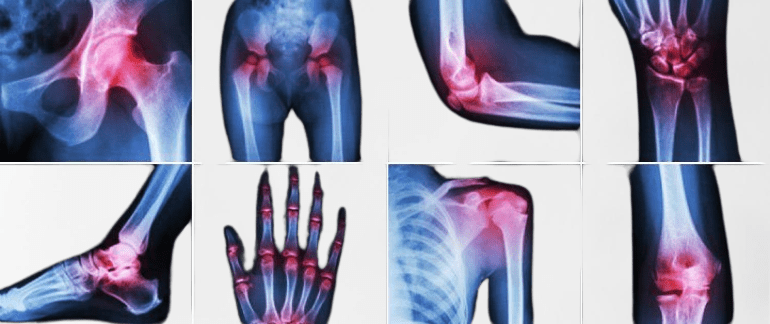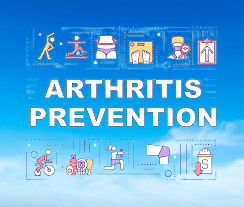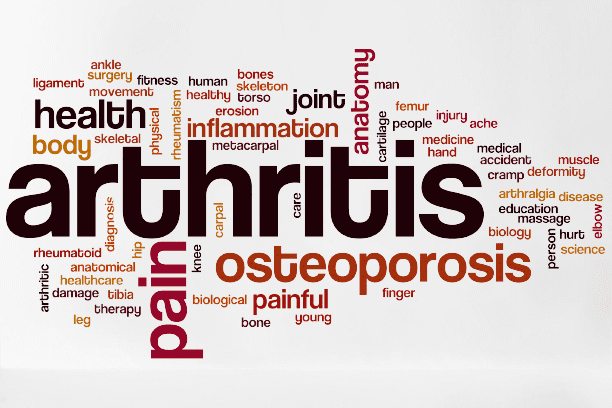World Arthritis Day: is a global health awareness event organized every year on 12 October to create awareness about the rheumatic and musculoskeletal diseases, its impact on one’s life and educating people the symptoms & preventive measures and guiding for the early diagnosis to cope up any further complications.
World Arthritis Day
World arthritis day (WAD) was established by Arthritis and Rheumatism International (ARI) and the first event was observed on 12 October 1996. Since then many global communities like Arthritis Foundation has joined the cause to raise awareness to fight the awareness gap, provide support and access to the communities, advocating for strong policies and supporting the research work.

The chief objective of this day is to promote global awareness about RMDs (Rheumatic and Musculoskeletal Diseases) and educate people on how early diagnosis and subsequent treatment can vastly alleviate pain symptoms and improve the quality of life for the affected patients.
What is Arthritis?
It refers to a debilitating condition characterized by inflammation of the joints in the body, such as the shoulders, elbows, knees and hips. Currently, nearly 350 million people worldwide suffer from arthritis and it is a global epidemic, affecting children, young adults and the elderly.
Arthritis is a term often used to mean any disorder that affects joints. Symptoms generally include joint pain and stiffness. Other symptoms may include redness, warmth, swelling, and decreased range of motion of the affected joints.

There are over 100 types of arthritis. The most common forms are osteoarthritis (degenerative joint disease) and rheumatoid arthritis. Osteoarthritis usually occurs with age and affects the fingers, knees, and hips. Rheumatoid arthritis is an autoimmune disorder that often affects the hands and feet. Other types include gout, lupus, fibromyalgia, and septic arthritis. They are all types of rheumatic disease.
Osteoarthritis affects more than 3.8% of people, while rheumatoid affects about 0.24% of people. Gout affects about 1–2% of the Western population at some point in their lives. In Australia about 15% of people are affected by this disease, while in the United States more than 20% have a type of this disease. Overall the disease becomes more common with age. The term is derived from arthr- (meaning ‘joint’) and -itis (meaning ‘inflammation’).
Rheumatoid arthritis is generally worse in the morning and associated with stiffness lasting over 30 minutes. However, in the early stages, patients may have no symptoms after a warm shower. Osteoarthritis, on the other hand, tends to be associated with morning stiffness which eases relatively quickly with movement and exercise
Types of Arthritis
Osteoarthritis
The most common type, osteoarthritis involves wear-and-tear damage to a joint’s cartilage — the hard, slick coating on the ends of bones where they form a joint. Cartilage cushions the ends of the bones and allows nearly frictionless joint motion, but enough damage can result in bone grinding directly on bone, which causes pain and restricted movement. This wear and tear can occur over many years, or it can be hastened by a joint injury or infection.
Osteoarthritis also causes changes in the bones and deterioration of the connective tissues that attach muscle to bone and hold the joint together. If cartilage in a joint is severely damaged, the joint lining may become inflamed and swollen.
Rheumatoid arthritis
In rheumatoid arthritis, the body’s immune system attacks the lining of the joint capsule, a tough membrane that encloses all the joint parts. This lining (synovial membrane) becomes inflamed and swollen. The disease process can eventually destroy cartilage and bone within the joint.
Arthritis Symptoms
Pain, which can vary in severity, is a common symptom in virtually all types of arthritis. Other symptoms include swelling, joint stiffness, redness, and aching around the joint(s). Arthritic disorders like lupus and rheumatoid arthritis can affect other organs in the body, leading to a variety of symptoms. Symptoms may include:
- Inability to use the hand or walk
- Stiffness in one or more joints
- Rash or itch
- Malaise and fatigue
- Weight loss
- Poor sleep
- Muscle aches and pains
- Tenderness
- Difficulty moving the joint
It is the most common cause of disability in the United States. More than 20 million individuals with this disease have severe limitations in function on a daily basis. It is estimated that the total cost of arthritis cases is close to $100 billion of which almost 50% is from lost earnings. Each year, arthritis results in nearly 1 million hospitalizations and close to 45 million outpatient visits to health care centers.
Arthritis Treatment
This disease does not have a permanent cure or medications. Relevant lifestyle changes is required to get rid of the pains.
- Include a well-balanced diet with plenty of anti-inflammatory food such as green leafy vegetables, berries, ginger, nuts, legumes, and fibre.
- Prioritize vitamin D and Calcium intake.
- Maintain Your Ideal Weight as carrying excess body weight adds stress to our joints, especially the weight-bearing joints.
- Practice regular physical activity followed by Low-Impact Exercises, which would put less stress on joints. Some of the Low-Impact Exercises that can be practice on daily basis are swimming, walking and cycling.
- Engage in yoga and meditation to help your muscles relax.
- Stop Smoking.

Basic Guidelines To Reduce Pain In Joints And Improve Bone Health:
Healthy Diet And Lifestyle
A well-balanced diet, comprising ample amounts of anti-inflammatory foods like green leafy vegetables, berries, ginger, nuts, legumes and fibres will work wonders to mitigate pain in the joints and keep body weight in check. Also keep in mind to steer clear of fried snacks, processed foods, excessive sugar and salt intake, smoking and alcohol, to reduce tenderness in joints.
Regular Exercise
Merely 15 minutes of physical activity every day will improve the range of motion in muscles. Moreover, fundamental stretching exercises of wrists, elbows, hips and knees will help to promote a sense of balance in the body. Remember to wear soft, comfortable footwear with flat surfaces, like sneakers or flip-flops, to aid in reducing the pressure exerted on the knees.
Hot And Cold Compress
A hot pack placed on the affected joint will improve blood flow to the region and help to relax the strained muscles. A cold compress or ice pack can immensely diminish pain signals travelling via nerves and also keep inflammation in the joints under control. Apply a hot or cold pack for 10 minutes, to relieve pain and discomfort.

Physical Therapy
Routinely go for physical therapy appointments with a certified physical therapist, as recommended by the healthcare professional, in order to enhance muscle power and mood. These carefully organized movements of aerobics, dancing and low-impact strength training will help to maintain proper body posture, significantly promote flexibility and function in muscles, besides effectively eliminating pain.
Yoga And Meditation
This disease affects the day-to-day productivity of an individual and can cause anxiety and depression. Meditation techniques and simple yoga asanas performed for a few minutes every morning will help to focus on positive aspects, improve breath control, elevate low moods and relax stressed-out muscles, bones and joints by reducing the mind’s sensitivity to pain.
Healthy Body Weight
Maintaining optimal body weight is crucial for alleviating joint pain, since being overweight or obese invariably put excess pressure on the hips and knees, leading to their degradation. Consult with a doctor, nutritionist and physiotherapist to set a realistic goal of shedding surplus body fat and attaining a healthy body weight, which reduces further damage to the joints with increasing age and exerts less force on them and minimizes pain while enhancing their range of motion.
Anti-Inflammatory Supplements
While adhering to a wholesome diet with regular low-intensity exercise and routine physiotherapy stretching sessions certainly helps keep joint degeneration in arthritis under control, anti-inflammatory supplements complement these restorative measures in mitigating joint discomfort. Proven supplements of curcumin – the active ingredient in turmeric, ginger and other herbal extracts of boswellia, willow bark are known to lessen inflammation in the system due to arthritis. Keep in mind to always seek the advice of a doctor before taking any supplements to ensure consuming them in the appropriate dose and avoid taking them if they trigger any side effects.